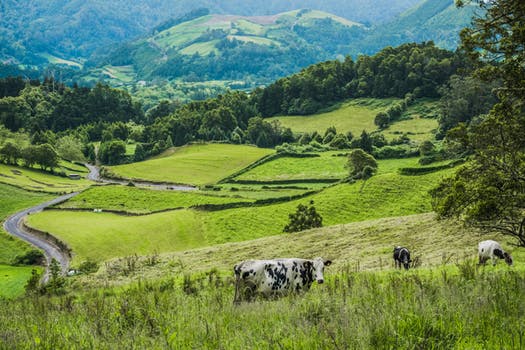Recent forest fires in Pedrógão Grande (Portugal) led to the tragic loss of more than 60 lives. This highlights a pressing need to understand how wildfires and risks to people will be modified under the context of global change. Some widespread changes that exacerbate severe wildfires include vegetation growth induced by rural depopulation, the expansion of forest plantations, and more extreme weather events reinforced by climate change.
Changes in land uses and climate change are interacting in many places. A direct effect of these two drivers is the increasing impact of wildfires on people and human assets. Consequently, human safety is the main priority of risk management strategies. This means that traditional actions aimed at reducing forest fuels must be complemented with actions that address social vulnerability. This is where fire management becomes tricky: there is a need to create landscapes that are less susceptible to high intensity fires while making society, houses and built assets more resistant to the impact of flames. A move towards a better public understanding of the risks posed by fires and fuels is required, including knowing how to act in case of fire, when to evacuate unsafe areas and when it is safer to stay in one place. Operational protocols shall be extended responding to fire suppression as well as the multiple civil emergencies needs simultaneously.

Promoting the bioeconomy helps wood mobilisation, landscape mosaics conservation and strategic fuels treatments, achieving forests able to “protect” from sever and destructive wildfires. CC0
It is well known that fuel treatments are the most effective way to reduce large wildfires risk in Mediterranean forests. The development of new crops, such as cultivated truffles trees and vineyards in marginal lands, can reduce wildfire risk. Consuming local wood or biomass is another way to promote forest management that reduces fire risks to communities. The benefits of understory grazing should also be valued; as this traditional use can replicate the role of low severity fires caused by lightning that limit the growth of fuels.
Reducing fuels in every location will not be possible (and neither have ecological sense) and there needs to be a social debate on the level of risk that can be tolerated. This is the current dilemma. What should be done with poorly managed and dense forests? Assuming that, if wooded areas are not managed to be more fire resistant (such as by having widely space and bigger trees, according to available guidelines and operational tools as prescribed fires), landscape will still suffer new large fires. And how this forest restoration scenario could be paid?
Including the contribution of environmental services in the landscape management economy is an opportunity not sufficiently explored. Integrating agriculture into wildfire risk mitigation strategies would be beneficial to local communities as well. Promoting the bioeconomy helps wood mobilisation, landscape mosaics conservation and strategic fuels treatments, achieving forests able to “protect” from sever and destructive wildfires. Finally, wildfire risk should be integrated into urban and spatial planning. Built assets and urban areas should include fire prevention measures within the urban planning process, and identify the expenses of protecting assets from forested lands, as well as exploring opportunities for protecting forests from urban areas. Each component of fire management should be integrated as a communicating vessels system. Improvements in reducing vulnerability of people and communities to fire increase the efficiency of emergency management because resources typically allocated to protect people and houses can instead be allocated to control fire spread.
In the context of global change, there should be more motivation than ever for fire prevention, preparedness and responses to be linked. Public bodies should work together under a shared and common strategy where risk components interact at short, medium and long term scales. Participatory approaches involving local communities should not only be done at the implementation stages of management but along the entire planning process. Raising awareness of risk to individuals should be a priority. In summary, we need to act together on fire hazard, vulnerability and responses. This could be done with ‘multi-actors’ platforms’ that increase cross-sector management of fire risks across local, regional and national levels. Building a cooperative and trusting environment between authorities with a regulatory role and stake-holders with rights and responsibilities is key. Motivating governances’ approaches to promote co-responsibility into risk reduction strategies supported by an accounting where avoided costs resulting from prevention and preparedness actions are brought out is crucial.

Traditional management with wood mobilisation and understory grazing combination (Picture 1, central Catalonia, NE Spain) emulating wildfire resistant natural structures present in fire-prone ecosystems under low and recurrent lightning caused fires (Picture 2, ponderosa pine forest in Idaho, USA) (Photos:E.Plana)
Wildfires will continue to exist and we are likely to see even more as fire-prone environmental conditions get worse under climate change. Indeed, zero risk does not exist, and do not has ecological sense since fire is a natural disturbance in many of the world’s ecosystems. Collectively, society but also professionals managing natural resources and biodiversity conservation, urban and land planners, environmentalists or communicators should be prepared to live with devastating wildfires hazards. Doing the best for mitigating undesired impacts on citizens, landscape goods and values and ecosystem services. We have to trust that this tragic event will serve to further review and improve wildfire risk management in front of the new challenges posed by the global change.
By Eduard Plana Bach, expert in Forest Policy and Environmental Governance. Forest Sciences Centre of Catalonia (CTFC)
Last modified: 9 January 2018










